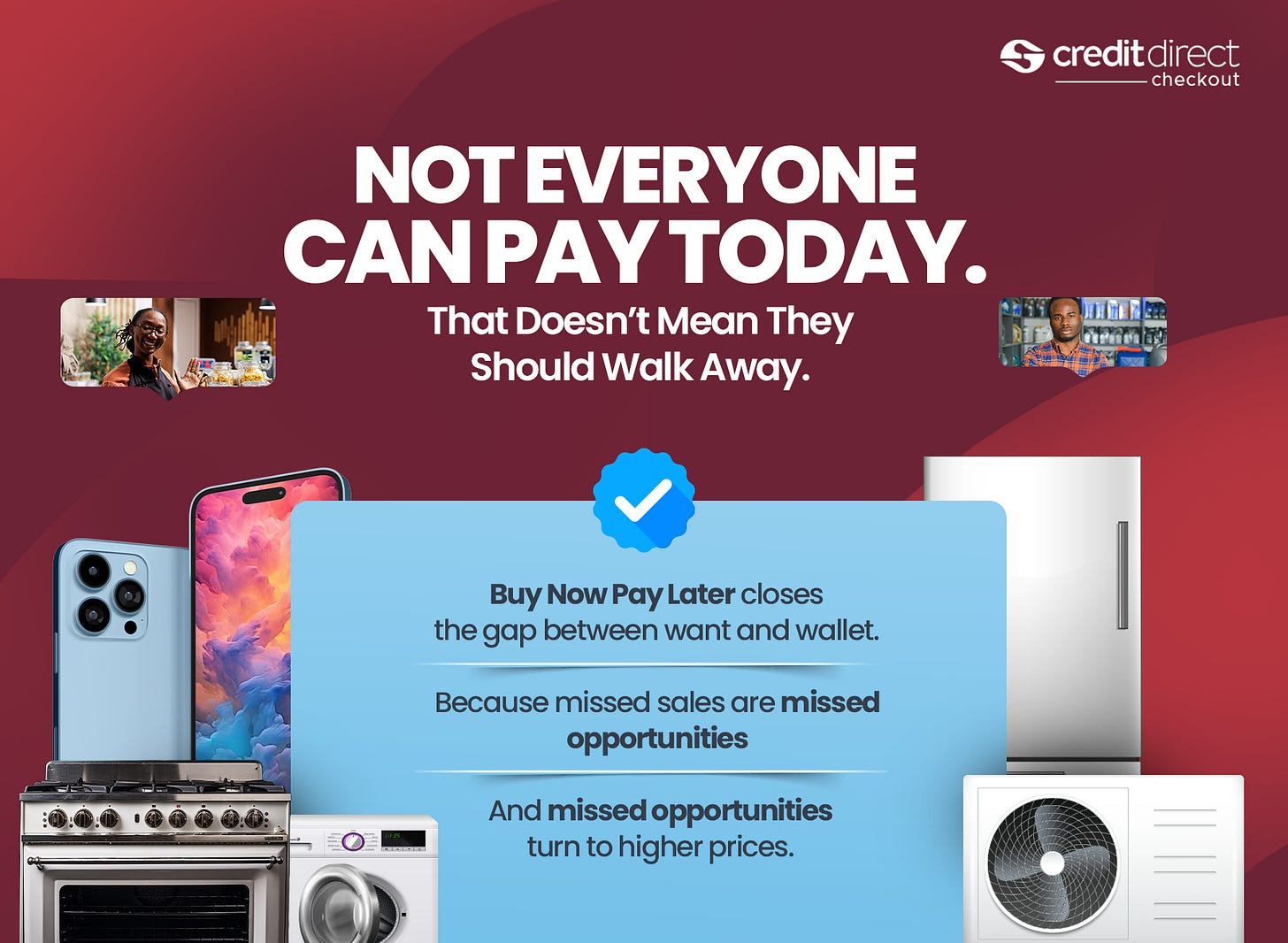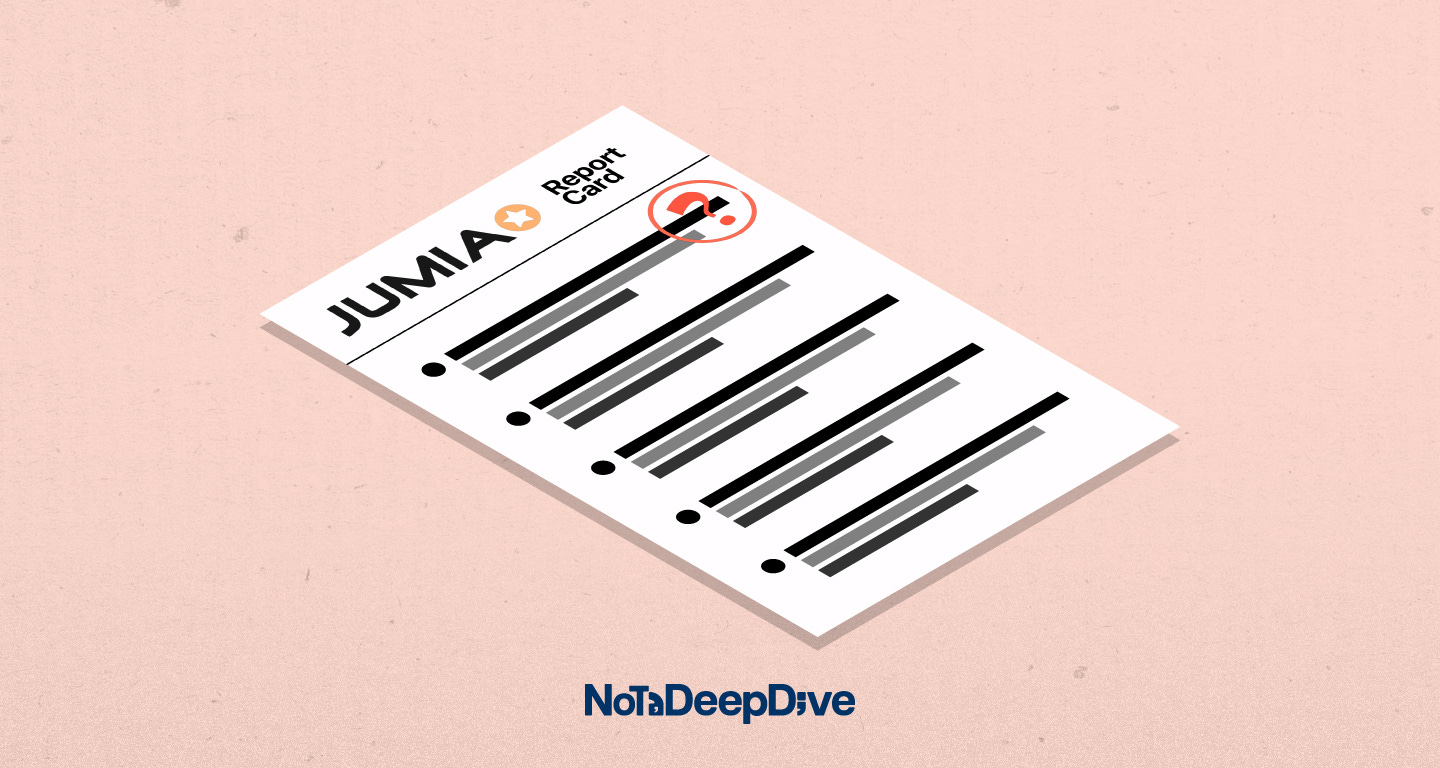Jumia’s walk to profitability is a tightrope
Jumia’s 25% revenue jump hides the reality of a balancing act
If you missed Wednesday’s newsletter, catch up here. If this email was forwarded to you, subscribe for free:
TOGETHER WITH CREDIT DIRECT
Turn “Come back later” into “Let’s seal it today.”
With flexible Buy Now Pay Later options, you don’t have to lose a ready buyer or delay a purchase that matters.
Credit Direct Checkout makes it easy to buy and sell with confidence, no matter the budget moment.
The stuff you don’t see in the headlines
One of the tests of how long you’ve been a Notadeepdive subscriber is if you understand my obsession with Jumia and at one time, Godwin Emefiele.
I often discuss how Jumia’s earnings are reported by the media: a sprinkle of topline and bottom-line figures, and inevitably, the losses. That method is why so much of the good stuff flies under the radar, like a $13.1 million cloud bill (now renegotiated), or how it’s battling Temu and Shein for customers.
On Tuesday, Jumia released its Q2 2025 results. As usual, headlines fixated on a 25% revenue jump and the 30% surge in $JMIA’s share price after the call. Fair enough. Those headlines hide some juicy details.
JumiaPay was never a revenue driver
When JumiaPay launched in 2016, it was pitched as a game-changer: process millions of payments for Jumia customers, give them wallets to pay utility bills and buy airtime. This was peak “fintech solves everything” era; slap fintech on anything and watch your valuation/market capitalisation grow.
To prove its importance, Jumia gave JumiaPay its own section in earnings reports, trumpeting transaction values and volumes. But here’s the trick: in fintech, where take rates are wafer-thin, those big numbers don’t mean much without knowing the actual revenue. Jumia never told us.
Until now (sort of):
“We have reduced our emphasis on JumiaPay app transactions, which historically contributed high order volumes but minimal revenue.”
The narrative around JumiaPay was always “look, this is important!” and yet it never moved the needle. It’s a reminder of why investor-friendly storytelling should always be met with a healthy dose of scepticism. JumiaPay was more about optics than economics.
And just so you know: in three years of using Jumia, I’ve never been able to make JumiaPay work.
Profitability or bust
Jumia says it will be profitable by FY 2027. A previous profitabilty promise cost two former CEOs their jobs. The new leadership insists they understand the stakes. They’d better.
The numbers are tight. Jumia has $98.3 million in cash. If it loses the $50 million it’s forecasting for 2025, then another $30 million in 2026, it leaves almost no buffer for 2027.
If it misses the target, it’ll need to raise money. And raising money almost certainly means new share issues or secondary sales, which dilute existing investors.
Between 2021 and 2022, Jumia raised $600 million through secondary sales. That sort of thing can’t happen forever before the market loses patience.
“We remain confident that our current cash position is sufficient to reach profitability without needing to raise additional capital,” CEO Francis Dufay said.
That’s an assertion, not a guarantee. It depends on keeping costs down and growing revenue, something Jumia has historically struggled to do at the same time.
The company brought in $45.6 million in revenue in Q2 and it has tried to control expenses. Staff salaries (including share-based compensation) came to $8.4 million.
It’s not an apples-to-apples comparison; different sectors, different pay structures, but it’s a useful speculum through which to see why Jumia has to keep cutting. Its per-head cost base is far heavier, and without rapid revenue growth, it’s hard to see how that’s sustainable.
“Overall headcount has declined by 5% since the beginning of the year, with just over 2,050 employees on payroll as of June, reinforcing our disciplined approach to cost management,” Dufay told investors.
Yet, you cannot cut your way to profitability. The other half of the equation is growth and means more customers.
While Jumia talks up retention, its customer base has been stagnant for years. From 6.8 million in 2020, it jumped to 8 million during the pandemic and has basically been parked there ever since. The 4.2 million customers it had in Q1 and Q2 this year suggest 2025 will end the same way.
And “annual active customers” is a generous definition. It counts anyone who placed an order, even if they cancelled or returned it. Without new customers, the 2027 profitability story is shaky.
Make First Party great again
First-party sales (where Jumia buys and sells goods itself) are expensive: warehousing, logistics, working capital. Third-party marketplaces (merchants list their products, Jumia takes a cut) are usually more profitable.
Historically, Jumia has leaned on third-party for better margins, but in Q2, first-party sales ($23.6m) edged past marketplace revenue ($21.6m). Popular direct-sale items included Starlink kits (hot in Nigeria and Kenya) and Adidas gear (big in Egypt).
“So as we said in the past, we're not guiding for a specific mix between 1P and 3P actually…1P has working capital requirements and we're very happy to push as much 3P as we can.”- Francis Dufay
That’s nice for now, but Starlink demand can fade (Starlink lost more than 10% of its Kenyan subscribers in 2025), Adidas can change distribution, and inventory risk is real. With first party sales, you don’t want to be left holding expensive stock that no one wants to buy.
On the marketplace side, Jumia hiked commission with little pushback. That could mean merchants see value or that they have no better options. Either way, international competition from Temu and Shein isn’t going away. Jumia’s hope is to woo more overseas sellers, and to outcompete the Chinese giants on price or selection and faster delivery.
Secondary cities strategy looks to be working
“Secondary cities” came up six times in the call. Nearly 59% of orders are now delivered outside major hubs like Lagos, Nairobi, and Dakar. On paper, it’s a smart play. Smaller cities mean less direct competition.
Yet, secondary cities must produce significant net new customers else it just shifts existing demand around becoming more geography shuffle than growth engine.
Something I found interesting: Nigeria contributes 22% to the company’s Gross Merchandise Value a.k.a the value of all goods sold on Jumia, making it a smaller market than Ivory Coast.
Bonus: Ad revenue and logistics business
$1.9 million in advertising revenue which has pretty high margins is a bright spot. Yet, for ads to make a real dent, growth would have to be explosive.
Bottom line: Jumia’s Q2 was tidy enough to pop the stock, but the bigger picture hasn’t changed: a stagnant customer base, heavy dependence on a few hot products, an ambitious profitability target with no margin for error, and competition circling in every major market. The headlines say “25% revenue growth.” The fine print says “tightrope walk.”
Smash that button: This newsletter runs on two things on great analysis and a wonderful community. When you like and share, you tell the algorithm this matters and you help keep Notadeepdive free for everyone.






Jumia in the news again. PTSD 2022/2023 is real 😭
Jumia drinking game. Insert Leonardo di Capri gif at this point